xiamen ZoneWu LoRaWAN water quality chlorophyll sensor is an ultra-practical wireless low-power IoT device. It can collect chlorophyll data in the water, monitor it in real time and send the data roll out. It can adjust the result of a measurement automatically according to the temperature.It is very suitable to monitor the water quality online. And it supports the standard LoRaWAN protocol, even if it is far away, it can also wirelessly transmit data.
Product Model :
LW109-CHLPower Supply Mode :
Battery or External DCFrequency :
CN470/IN865/EU868/RU864/US915/AU915/ KR920/AS923-1&2&3&4MAC Version :
LoRaWAN 1.0.3Mode :
OTAA Class A/CWeight :
150gIntegrated Wireless LoRaWAN Water Quality Chlorophyll Sensor
xiamen ZoneWu LoRaWAN water quality chlorophyll sensor is a device that can measure the chlorophyll concentration in water wirelessly.
xiamen ZoneWu LoRaWAN water Quality Chlorophyll Sensor Features:
The chlorophyll sensor uses fluorescence principle to work, and the optical path is transmitted by fiber optic, which can make the measurement more accurate.
The sensor has a special filtering algorithm, even if the outside light is complex and variable, it will not affect its normal operation, and can steadily obtain data.
It can automatically adjust the result of a measurement, no matter how the water temperature fluctuates, can be accurate measurement.
The output is relative fluorescence units, so that we can analyze the actual relationship between fluorescence intensity and chlorophyll concentration.
Through the aviation connector, the sensor can be connected to the LoRaWAN collector, and then the measured data can be transmitted wirelessly, which is easy and convenient.
Rivers, lakes, ponds, marine surveys, fish and shrimp farming, drinking water source monitoring, and research, investigation and detection of algae and phytoplankton conditions can use this sensor.
Technical Parameters
|
Power Supply |
DC12/24V |
|
Weight |
150g |
|
Measuring Range |
0~400μg/L |
|
Temperature Measurement Range |
-20-80℃ |
|
Resolution |
0.1μg/L; Temperature:0.1℃ |
|
Pressure Resistance |
0.6Mpa |
|
Electrode Usage Cycle |
6-12 months |
|
Transmitter Line length |
Default 5m (other lengths can be customized) |
|
Frequency |
CN470/IN865/EU868/RU864/US915/AU915/KR920/AS923-1&2&3&4 |
|
Mode |
OTAA Class A/C |
|
Reporting cycle |
5min(Default ) |
|
Communication Protocol |
LoRaWAN,LoRa TDMA Networking |
|
Equipment information (Reference) |
AppEUI:331341E186891989 DevEUI:aaaa202404150001 AppKey:5572404c696e6b4c6f526132330313823 MAC Version: LoRaWAN 1.0.3 |
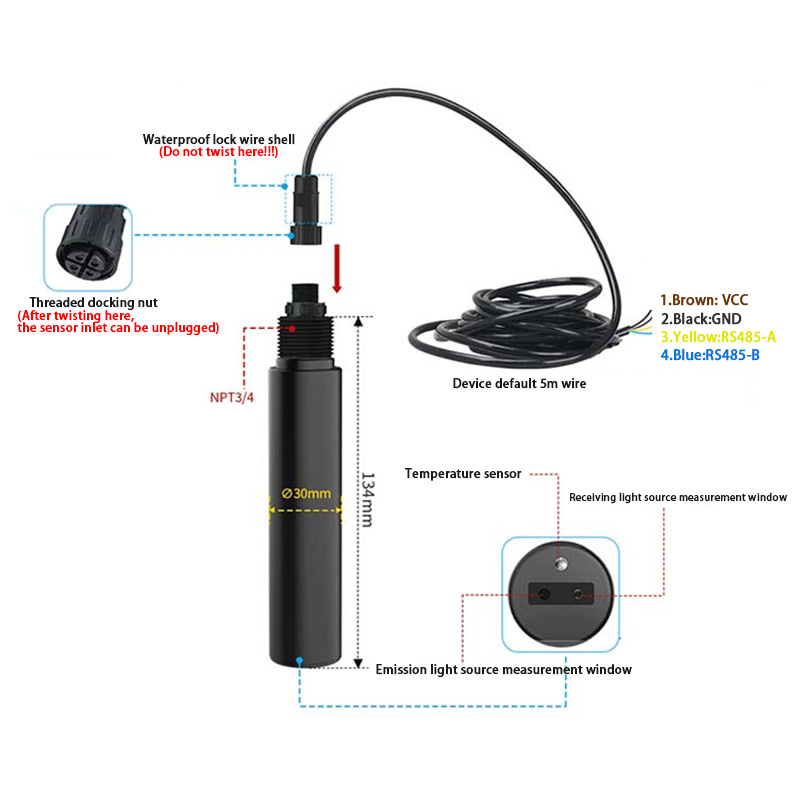
Chlorophyll Transmitter Size and Installation
1. Submerged installation: The lead wire of the equipment is passed through the waterproof pipe, and the 3/4 thread on the top of the equipment is connected with the 3/4 thread of the waterproof pipe with raw material tape. Make sure that the top of the equipment and the equipment lines are free of water.
2. Pipe Installation: Connect to the pipe through the 3/4 thread of the device.
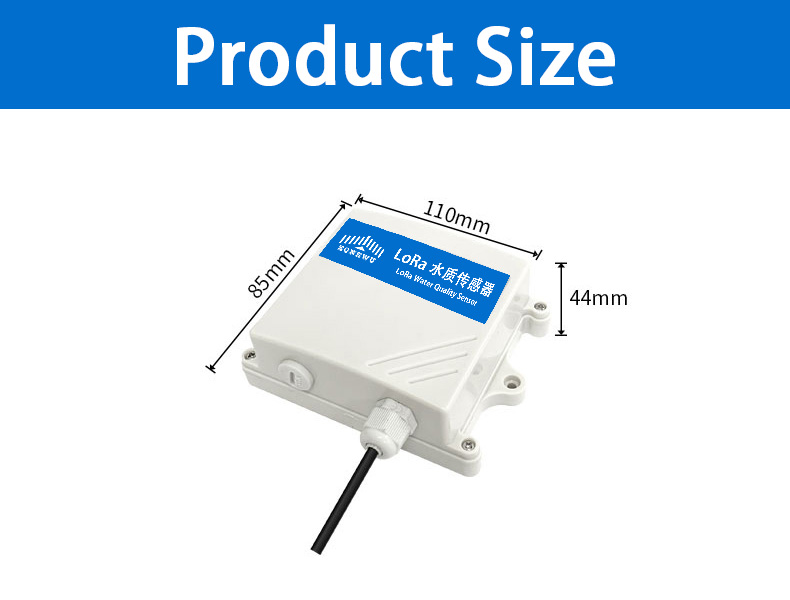
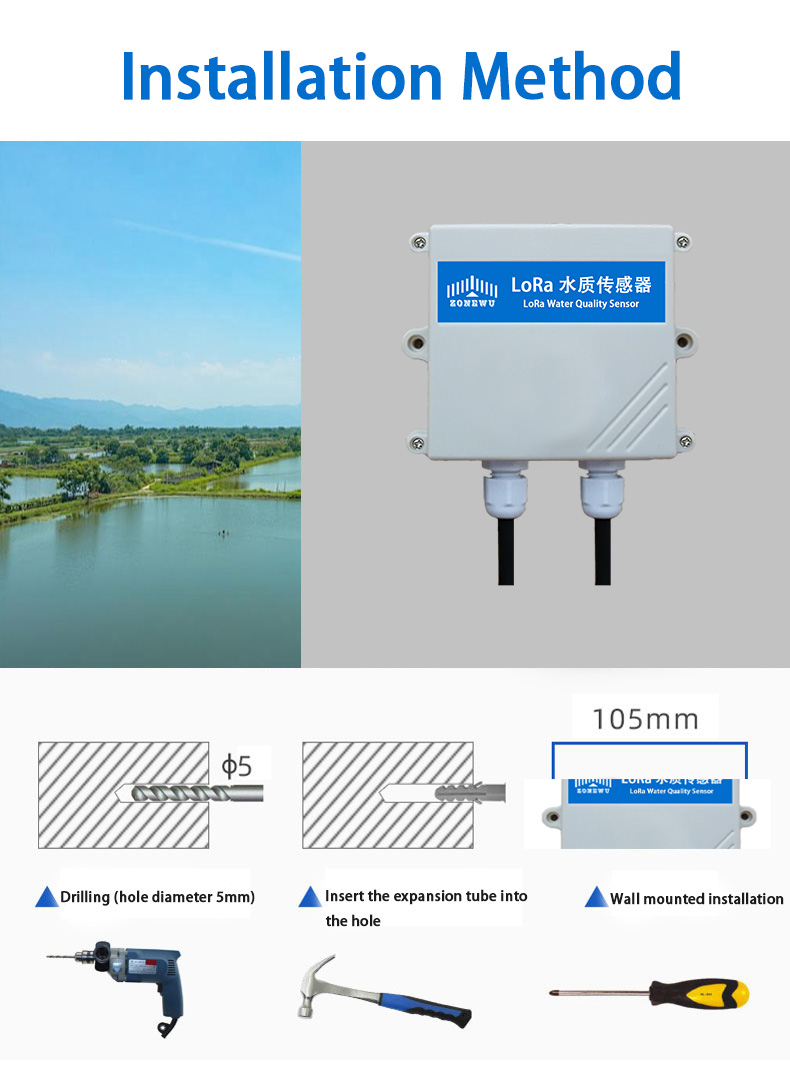
Common knowledge of chlorophyll in water bodies:
What is the source of chlorophyll in water and why is the essence of measuring chlorophyll a
The chlorophyll in water comes from free green algae and blue-green algae in the water. Among them, green algae contain chlorophyll a and chlorophyll b, while blue-green algae only have chlorophyll a, so the essence of measuring chlorophyll is to measure the concentration of chlorophyll a.
According to HJ897-2017 standard, what are the advantages and disadvantages of measuring chlorophyll a by spectrophotometry
According to the ecological environment standard HJ897-2017, the determination of chlorophyll-a using spectrophotometry is relatively accurate, but the operation is complex and requires numerous reagents and instruments, such as acetone extraction for chlorophyll, centrifuge for solution stratification, spectrophotometer for absorbance measurement, and real-time measurement is not possible.
What are the advantages and disadvantages of measuring chlorophyll a by fluorescence method compared with spectrophotometry
This product uses the fluorescence method, which utilizes the fluorescence properties of chlorophyll a. When excited by light of a specific wavelength, it produces fixed wavelength fluorescence. The concentration of chlorophyll a can be calculated based on the intensity of the fluorescence. Compared with spectrophotometry, fluorescence method has obvious convenience advantages, suitable for online real-time measurement, and low measurement cost. The disadvantage is that the accuracy is not as good as spectrophotometry, and there are more interference factors.
What indicator values are included in the criteria currently used to determine eutrophication of water bodies
There is no unified standard for determining eutrophication of water bodies. The currently commonly used standards are:
The nitrogen content in the water exceeds 0.2~0.33ppm, the phosphorus content is greater than 0.01~0.02ppm, and the biochemical oxygen demand is greater than 10ppm,
The total number of bacteria in freshwater with a pH value of 7-9 exceeds 100000 per milliliter, and the content of chlorophyll a, which represents the number of algae, is greater than 10mg/L.
Application Scenarios
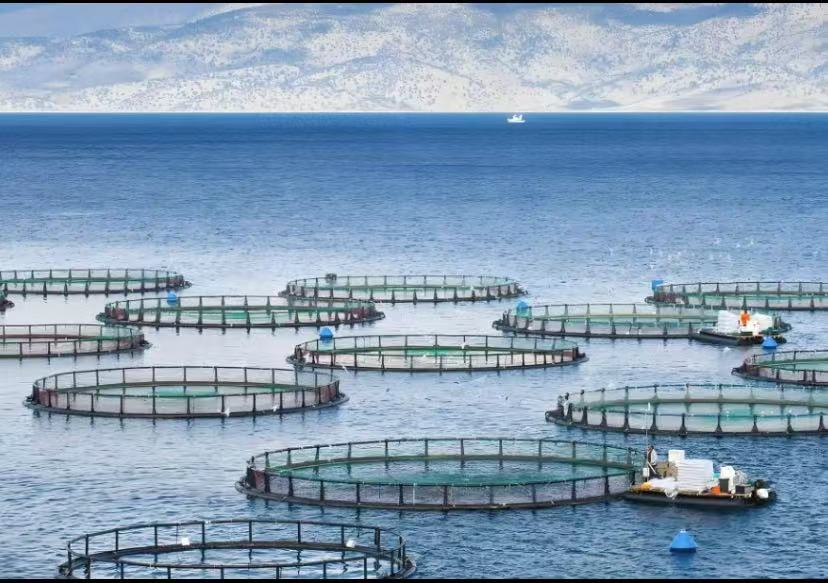
Aquaculture
Monitor the calcium ion concentration of aquaculture bodies to ensure the health of aquaculture organisms and the stability of water quality.

Seawater Monitoring
Monitoring the concentration of calcium ions in seawater is conducive to marine ecological research and the regulation of seawater aquaculture.
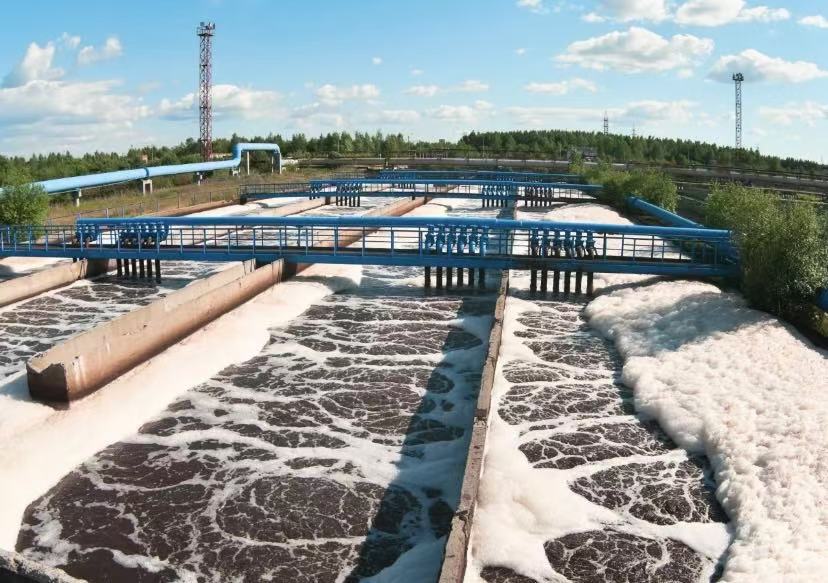
Industrial Wastewater
Monitoring the concentration of calcium ions in industrial wastewater helps with wastewater treatment and achieving compliance with discharge standards.
A:Yes,we can provide you with OEM services and design housings and logos.
3.DO you offer free samples?
A:Sorry,we don't offer free samples.After ordering in bulk,we will deduct the sample fee from the second order.
Why Choose ZONEWU